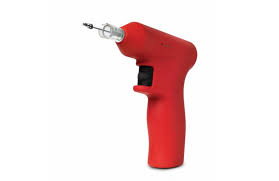
 Intraosseous (IO) vascular access is a critical emergency procedure that delivers fluids, medications, or blood products directly into the bone marrow cavity when traditional intravenous (IV) access is unavailable or delayed.
Intraosseous (IO) vascular access is a critical emergency procedure that delivers fluids, medications, or blood products directly into the bone marrow cavity when traditional intravenous (IV) access is unavailable or delayed.
It provides rapid systemic circulation access through the non-collapsible venous network in the medullary space, making it lifesaving in critical scenarios like cardiac arrest, severe shock, or trauma.
Indications:
Peripheral IV access fails due to conditions like edema, obesity, or hypotension.
Need form immediate resuscitation is needed-cardiac arrest, severe dehydration, hemorrhagic shock.
Contrast administration is required for emergency imaging.
Blood sampling is necessary for laboratory testing.
Contraindications:
Bone abnormalities: Fractures, osteoporosis, osteomyelitis, or recent orthopedic surgery at the insertion site.
Local infections or burns over the target area.
Presence of adequate IV access
Insertion sites: Common locations include the proximal tibia, the most frequent, distal femur, humerus, or sternum.
Devices: Manual needles or powered drills
IO access should be replaced with IV within 24 hours to reduce infection risk.
Medications and fluids achieve systemic circulation in 1–2 minutes, matching IV efficacy.
Advantages over alternatives include: Faster access: as success rates double peripheral IV in hypotensive patients.
Safer than central line placement.
IO access is a vital bridge in emergencies, balancing speed with procedural safety.
